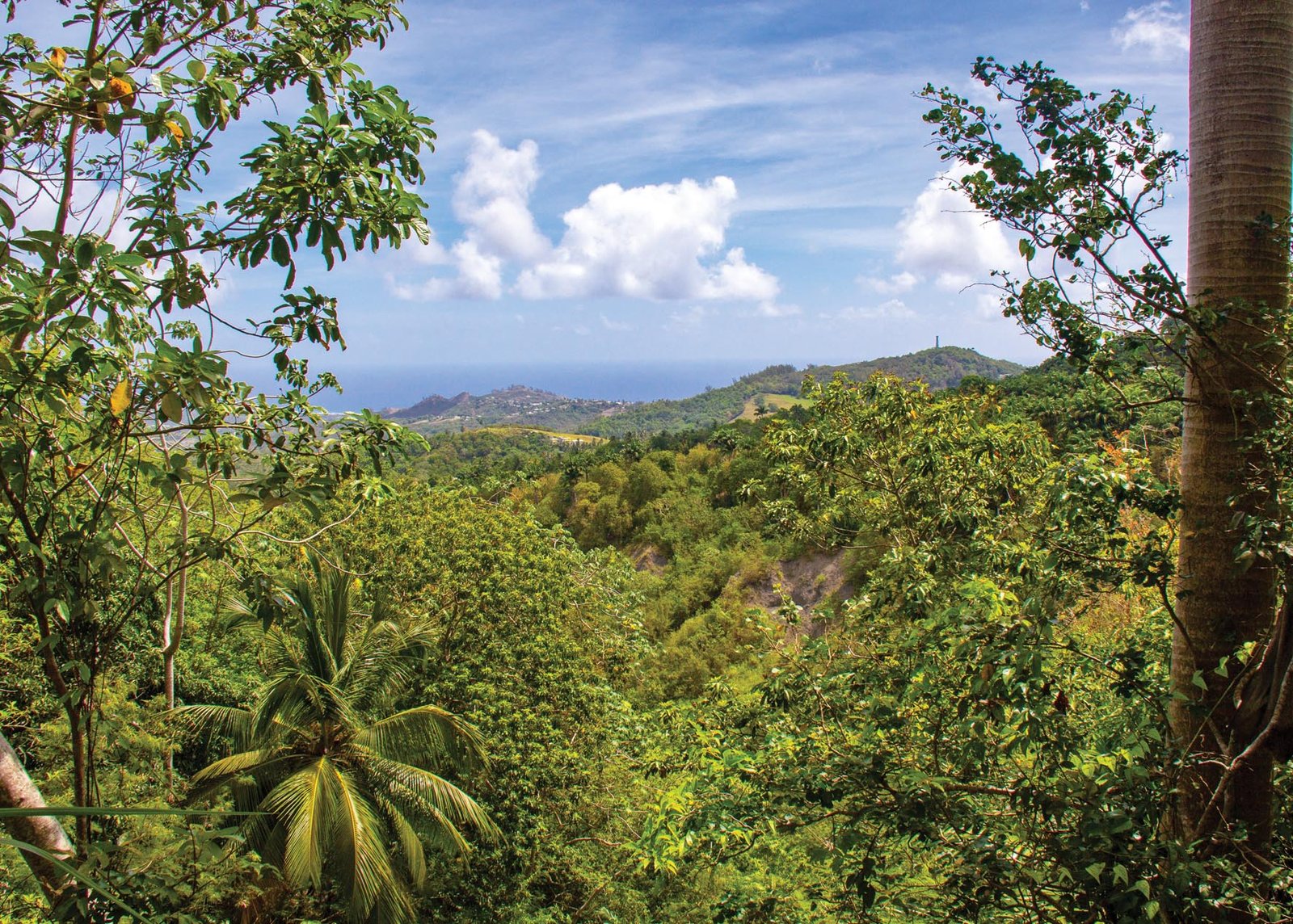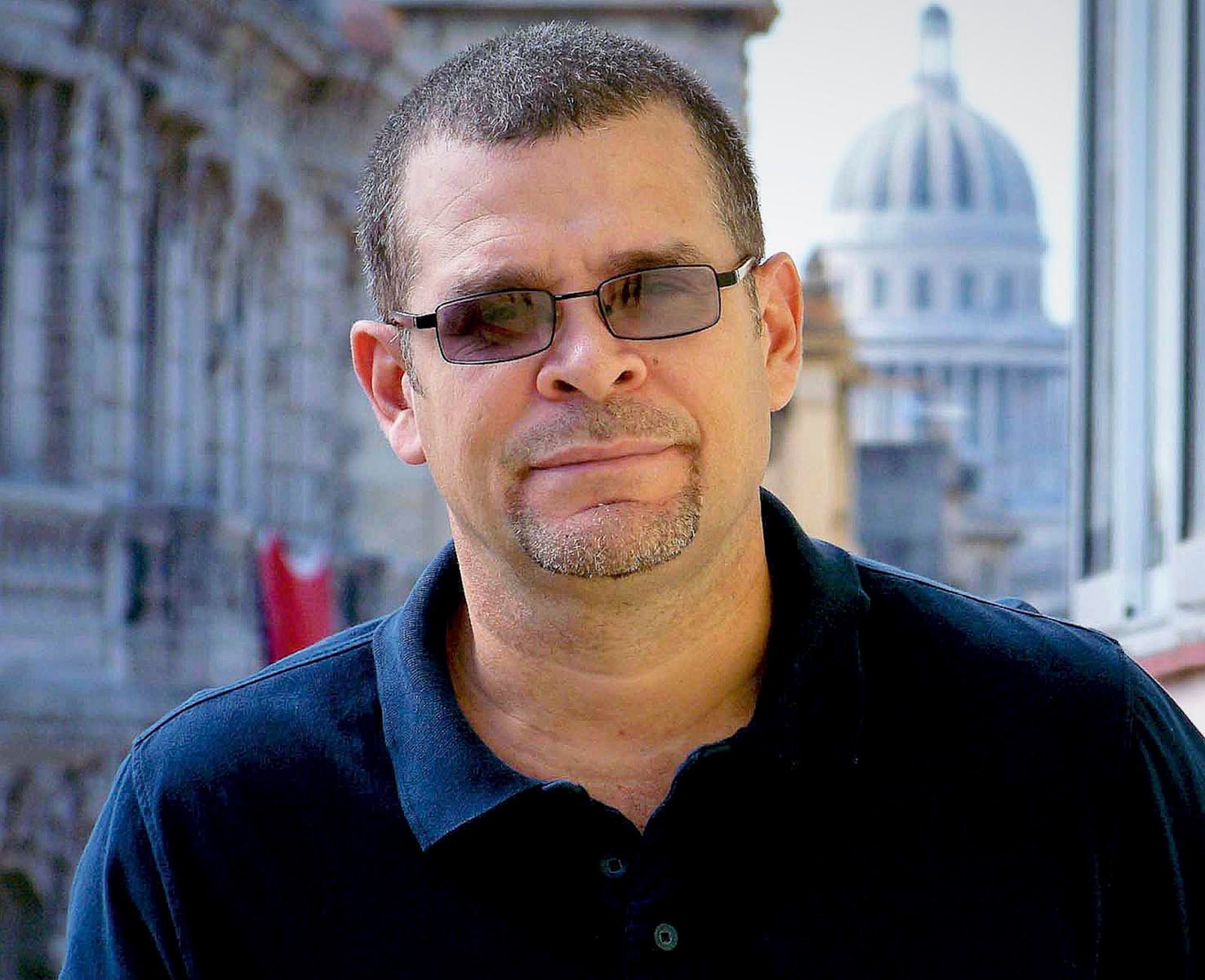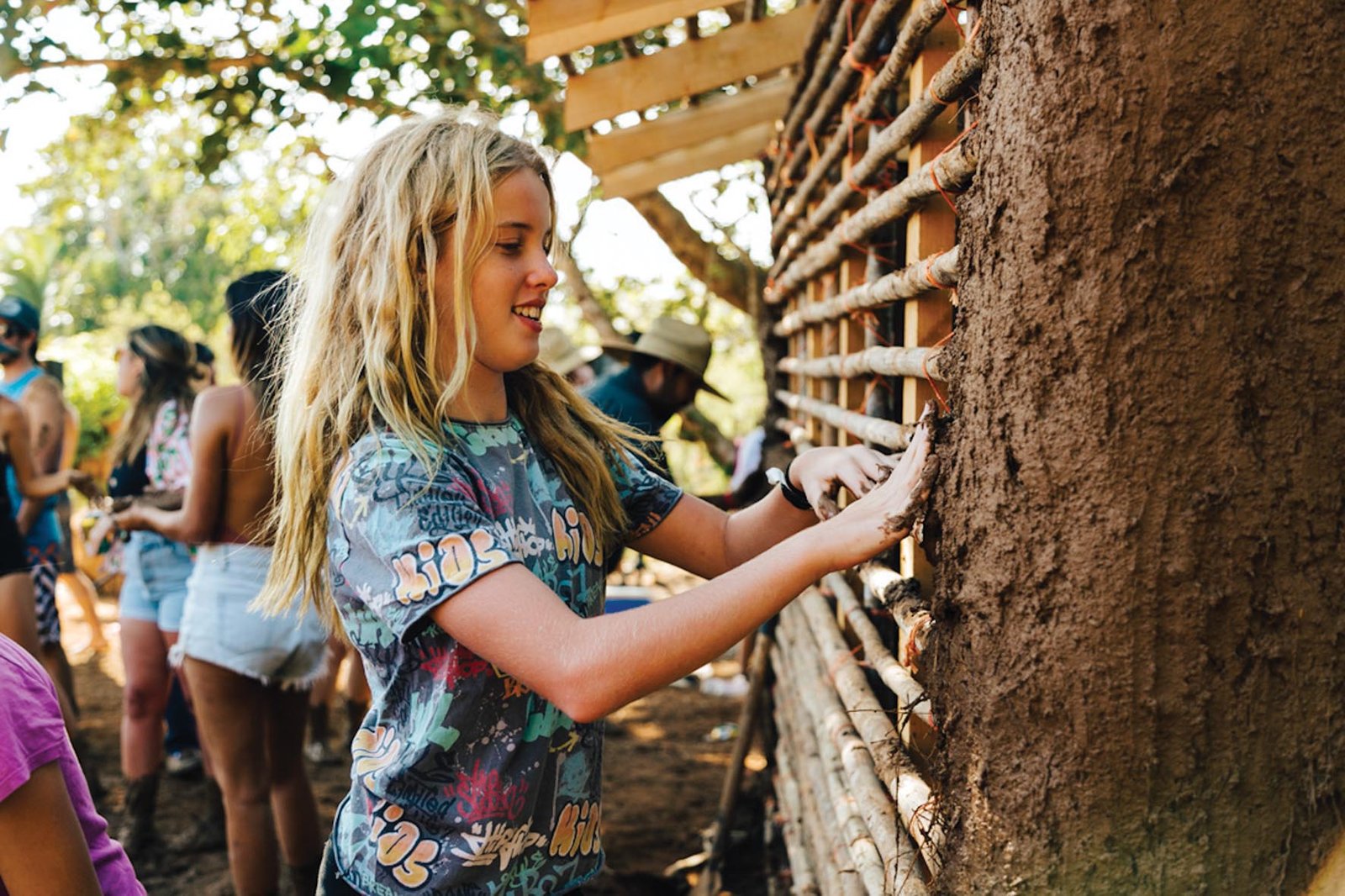
Baracoa a Cradle of Cubanism
By Juan Abelardo Carles
Photos: Carlos Eduardo Gómez
Baracoa is, in a certain way, an island within another island. That’s how my friend Lázaro described it to me when, a few days earlier, I expressed my interest in visiting this eastern city. I thought he could not be more right as we navigated the complicated road between the mining town of Moa and our destination. The dense rainforest of Alejandro de Humboldt National Park contributed to the sensation of traveling to a secluded sanctuary, far from the constant movement of modern day Cuba. The sea and mountainous vegetation that reaches the shore are part of the personality of Baracoa (a name that means “presence of the sea” in the aboriginal language). This is a special place, unique in Cuba: it is hotter here, it rains more, and there are more rivers, more vegetation, and more native fauna and flora than elsewhere on the island.
Arriving visitors are in awe at the appearance of El Yunque, a flat top mountainous formation that rises 1,837 feet high. It is visible west of the city, even before any of the buildings or the splendid, almost perfect bay come into view. El Yunque has ruled over Baracoa since the city’s founding on August 15, 1511. The first of seven settlements established by the Spaniards in the early stage of colonization, Baracoa was the island’s first capital and religious seat. Although few buildings remain from that age, the grid design that the Spaniards gave their streets survives, as well as the circuit of fortifications they built to protect the city from pirates and competing powers. Our first stop will be one of these fortifications: the Castle of Santa Bárbara on Seboruco Hill, now converted into a hotel.
 The Spaniards immediately set up fortifications and watchtowers at the top of the hill to warn of the arrival of friendly and enemy ships, but the construction of the castle proper began in 1739. The current complex was completed by the United States in 1900 and served as barracks from 1929-1933, during the dictatorship of Gerardo Machado. There are those who say that, at night, in the complex’s deepest corners, you can feel the presence of the victims of the repression. In my room I just felt the soft hum of the air conditioning, which lulled me to sleep and helped me wake up full of energy and ready to walk around Baracoa.
The Spaniards immediately set up fortifications and watchtowers at the top of the hill to warn of the arrival of friendly and enemy ships, but the construction of the castle proper began in 1739. The current complex was completed by the United States in 1900 and served as barracks from 1929-1933, during the dictatorship of Gerardo Machado. There are those who say that, at night, in the complex’s deepest corners, you can feel the presence of the victims of the repression. In my room I just felt the soft hum of the air conditioning, which lulled me to sleep and helped me wake up full of energy and ready to walk around Baracoa.
Seboruco, southeast of the city next to the fort of Matachín, and the Castle of La Punta, to the extreme northwest, delimit the city’s tourist zone. Matachín is home to the Municipal Museum, which displays the entire history of the region, from the pre-Columbian Taino culture to the Spanish colonial period and French influence, which was accentuated by the arrival of Haitian refugees after the proclamation of the first black republic in the Americas, until the Revolution of 1958.
 Discovering the history of Baracoa in the city’s primary museum is good preparation for later walks around the city’s busy streets to absorb its particular way of life. You can nourish yourself with salt and sea breezes, walking along the seafront of the city, but I prefer to walk along José Martí Avenue, the main artery of commerce. Immersing myself in the daily routines of the Baracoans allows me to savor the uniqueness of Cuba.
Discovering the history of Baracoa in the city’s primary museum is good preparation for later walks around the city’s busy streets to absorb its particular way of life. You can nourish yourself with salt and sea breezes, walking along the seafront of the city, but I prefer to walk along José Martí Avenue, the main artery of commerce. Immersing myself in the daily routines of the Baracoans allows me to savor the uniqueness of Cuba.
Cars mix with vehicles pulled by animals or propelled by humans. In front of her house, a hardworking Baracoan entrepreneur offers spare parts for all types of appliances made from molten aluminum in a workshop in the home. Farther along, in a grocery store, clients gather by the counter to buy ham from the most recent cargo shipment. In the midst of the vigorous movement of the people, veering a bit off Martí Avenue on Maceo street, you’ll come across the Casa de la Cultura Cecilio Gómez Lambert, which has an exhibit space and auditorium. It is also a place where old and young alike apply themselves to learning dance, art, and music.
 These streets have been traversed by the sort of peculiar personalities that only a town trapped between myth and reality can claim. There was Magdalena Rovenskaya, a Russian aristocrat who sought, in vain, to put two continents and an ocean between herself and the Bolshevik Revolution. There was also the Swiss surgeon Enrique Faber, who married a Cuban in the Nuestra Señora de la Asunción Cathedral. Later it was learned that he was really a she, named Enriqueta, who for years had fooled Baracoan society and the clergy.
These streets have been traversed by the sort of peculiar personalities that only a town trapped between myth and reality can claim. There was Magdalena Rovenskaya, a Russian aristocrat who sought, in vain, to put two continents and an ocean between herself and the Bolshevik Revolution. There was also the Swiss surgeon Enrique Faber, who married a Cuban in the Nuestra Señora de la Asunción Cathedral. Later it was learned that he was really a she, named Enriqueta, who for years had fooled Baracoan society and the clergy.
What is authentic in the Nuestra Señora de la Asunción Cathedral is the Cruz de la Parra, the only remaining cross from the set of twenty-nine planted by Christopher Columbus on his voyages of discovery. Originally it stood 6.5 feet tall, but it shrank at the hands of pilgrims and devotees who ripped splinters from the cross until it was riveted in silver and placed in a protected niche.
 Baracoa is an old city, but it is also a place of sanctuary for old traditions and customs, especially if you travel to the rural areas that surround the city. The town presides over a lush green region where inhabitants still practice some of the most basic Cuban traditions. For example, at the Toa Ranch on the banks of the Toa River, the fastest flowing and largest on the island, you can taste some of the most traditional stews of eastern Cuban cuisine.
Baracoa is an old city, but it is also a place of sanctuary for old traditions and customs, especially if you travel to the rural areas that surround the city. The town presides over a lush green region where inhabitants still practice some of the most basic Cuban traditions. For example, at the Toa Ranch on the banks of the Toa River, the fastest flowing and largest on the island, you can taste some of the most traditional stews of eastern Cuban cuisine.
You should also try “chancho a la varita” (roasted pig on a spit), accompanied by “viandas” (tubers, bananas, etc.), the “caldos,” (potato soup), rice with vegetables, and coconut and cocoa sweets and cacao, among other dishes. The food is served in trays made of real palm leaves (katauros) with coconut bark ladles and other traditional utensils. When you are finished, a delicious drowsiness will hit you, very appropriate for a ride in a “cayuca,” a boat made of bamboo, similar to those used by people from the country to travel along the Toa River. But don’t leave without first having a cup of fragrant coffee or a “naranja del Toa,” a traditional cocktail similar to the popular mojito.
 In restaurants around the city you can find other traditional dishes like the “cucurucho,” an exquisite traditional sweet from the region that mixes water and coconut with honey, fruit, and sugar, or the “bacán,” a traditional dish that has been passed down from generation to generation. It is baked with dried coconuts, green plantains, spices, and pork, beef, or chicken. At Finca Duaba, another place that honors the traditions of Baracoa, tourists learn the basics of traditional cocoa cultivation, and can try the best chocolate, in a bar or in a cup mixed with coconut milk, which adds another level of flavor. Duaba is only about seven and a half acres, since it’s just for demonstration purposes. The guides will show you how the country peasants of Guantánamo (Baracoa’s province) live by planting cocoa, coffee, mango, avocado, oranges, mandarin, banana, mamey, guava, coconuts, and palm, among other crops.
In restaurants around the city you can find other traditional dishes like the “cucurucho,” an exquisite traditional sweet from the region that mixes water and coconut with honey, fruit, and sugar, or the “bacán,” a traditional dish that has been passed down from generation to generation. It is baked with dried coconuts, green plantains, spices, and pork, beef, or chicken. At Finca Duaba, another place that honors the traditions of Baracoa, tourists learn the basics of traditional cocoa cultivation, and can try the best chocolate, in a bar or in a cup mixed with coconut milk, which adds another level of flavor. Duaba is only about seven and a half acres, since it’s just for demonstration purposes. The guides will show you how the country peasants of Guantánamo (Baracoa’s province) live by planting cocoa, coffee, mango, avocado, oranges, mandarin, banana, mamey, guava, coconuts, and palm, among other crops.
With the construction of the La Farola road in 1965 linking Baracoa with Santiago de Cuba on the southeast coast of the island, the mysterious spell that had seemed to envelop Baracoa appeared to weaken. Lázaro told me that, even if tourism has changed Baracoa, the hospitable, cheerful, and calm character of its residents has stayed the same. I leave the oldest and most venerable of Cuban towns along this road, a marvel of engineering that crosses the spine running through the middle of the island. After every hill and bend in the road, El Yunque, guardian of the city, appears and hides like a mirage until, just as it welcomed me, it bids me a good journey and I continue my sojourn of discovery through Cuba.




